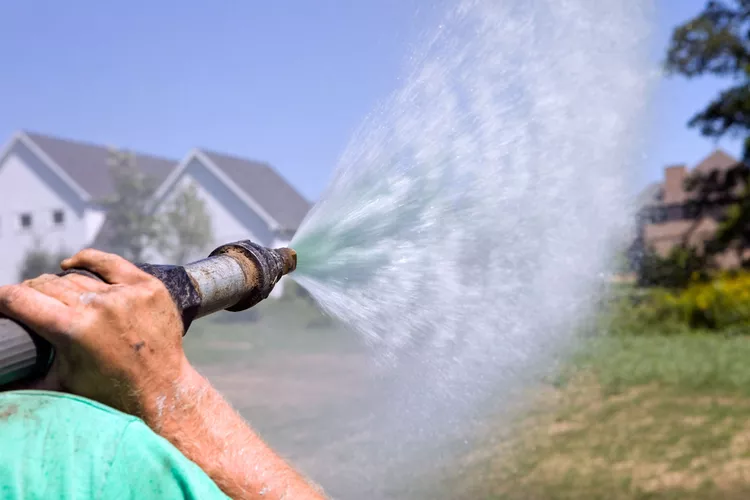At one time or another, we've all seen that one patch of the yard that just won't grow grass, no matter how much its fertilized or watered. Instead of trying to fix those troublesome areas by routinely tilling and laying down grass seed, try hydroseeding your lawn. You can get help from professionals or use a DIY hydroseeding kit to get your lawn back to its prime.
What Is Hydroseeding?
Hydroseeding is a way to lay grass seed using a spray mixture of mulch, seeds, fertilizer, and water over any barren patch of the lawn. You can buy premade hydroseeding mixtures, or you can try your hand at making a DIY hydroseeding mixture (which may be less expensive). That mixture leaves a layer of protection and nutrients on the applied area while also giving ideal germination conditions for the grass seed.
There are many benefits to using the hydroseeding method versus hand-sowing grass seed. The mulch in the mixture protects the seeds, so they have time to germinate, and it bonds to the soil, so the mixture won't blow away or erode with rain. As the mulch decomposes, it adds extra nutrients to the soil.
You can add a colorant to the mulch mix that will blend into your lawn. Look for nontoxic dyes and avoid dyes like Malachite green that can be harmful to aquatic life. Since it decomposes, hydroseed doesn't need to be removed after application. Once you've sprayed the area, keep the mixture consistently wet for the first two weeks—that means watering the area two to three times a day, depending on your climate. Keep pets away from the area by putting up flags or a temporary fence and avoid walking on the sprayed mixture for the first few weeks.
Hydroseeding vs. Sod
Installing sod is a great way to get instant results: The patched area looks good right away, and you can walk on the sod immediately after installation. That instant-gratification installation, however, comes with a high price tag. If hand-seeding isn't working and you don't want to splurge on sod, hydroseeding is the next best thing. Although there's a longer time that you cannot walk on the patched area, this process falls in the middle of the road when it comes to pricing—and, it grows faster than hand-seeded grass.
Hydroseeding Supplies
To get access to hydroseeding equipment, hire a professional service or rent the equipment from a lawn care company. You can find small, handheld hydroseeding kits like the Hydro Mousse Liquid Lawn System, ($28, Amazon), but the best DIY hydroseeding comes from professional-level equipment. Professional hydroseeding companies often have many options as to what type of grass seed, fertilizer, and soil treatments you can have in your mixture. It's always best to test your soil before going to the pros. They can help you find the best combination for your yard. If you rent equipment for doing your lawn yourself, you can find hydroseeding mulch online or at home stores.
Hydroseeding Cost
If hydroseeding is so great, you're probably wondering how much it costs. Luckily, it's pretty affordable. According to HomeAdvisor, in 2019, the cost averaged between $0.06 and $0.20 per square foot—$2,000 to $4,000 per acre. Rolls of sod typically fell into the range of $0.28 to $0.45 per square foot. So, if you're just tackling that troublesome patch your dog has worn down to the soil, it's going to cost far less. However, you should get estimates from a few local companies to make sure you're finding the best deal.
If you're tired of being disappointed every year when your grass seed doesn't take, give hydroseeding a try. If you don't feel confident DIY hydroseeding the first year, look to a professional for guidance. With protection from erosion, wind, and extreme heat, you may have more success in getting the full, lush lawn you've always dreamed of.




















